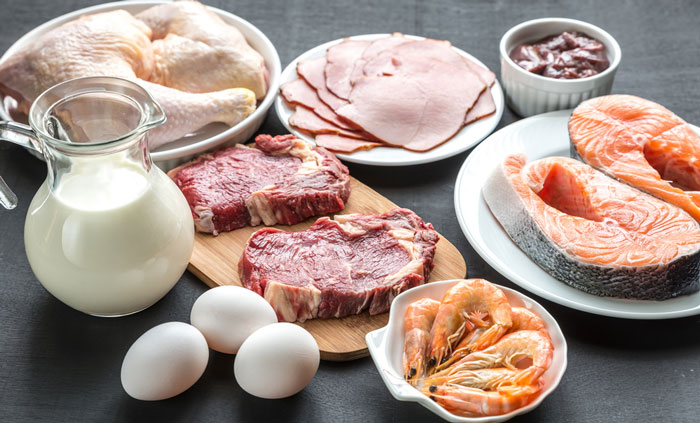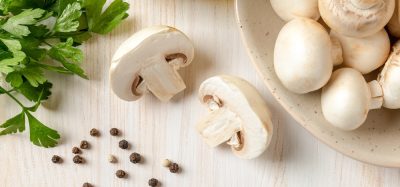Fungal food contains as much protein as animal sources
- Like
- Digg
- Del
- Tumblr
- VKontakte
- Buffer
- Love This
- Odnoklassniki
- Meneame
- Blogger
- Amazon
- Yahoo Mail
- Gmail
- AOL
- Newsvine
- HackerNews
- Evernote
- MySpace
- Mail.ru
- Viadeo
- Line
- Comments
- Yummly
- SMS
- Viber
- Telegram
- Subscribe
- Skype
- Facebook Messenger
- Kakao
- LiveJournal
- Yammer
- Edgar
- Fintel
- Mix
- Instapaper
- Copy Link
Posted: 11 October 2017 | George Smith (New Food) | No comments yet
A joint study by the University of Exeter and Quorn has found that the fungi-based protein source is just as rich in the nutrient as milk.


OLD SCHOOL: Traditional sources of protein may soon by muscled out by the rise of alternative sources like Quorn.
Food labelling usually lists protein as a simple number, but some proteins have better “bioavailability” than others – meaning more can be used by the body.
Animal proteins like milk are known to have high bioavailability, making them an excellent source of building blocks for muscles.
Researchers from the University of Exeter compared milk protein with mycoprotein – the fungi-based source of the nutrient found in Quorn foods – and found “equivalent” bioavailability.
University scientists say more research is now needed to see if the high bioavailability of mycoprotein translates to beneficial effects, equivalent to animal sources, on muscle tissue for different groups of people.
“In the last decade or so, nutritional research has led to more and more people – including athletes and older people – being advised to consume more protein than the standard recommended daily allowance,” said first author Mandy Dunlop, of the University of Exeter.
“At the same time, government and societal concerns about the sustainability and environmental effects of producing animal-based proteins like meat and dairy products have been growing.
“Quorn’s mycoprotein is produced with far less impact on the environment, and our research shows the bioavailability of its protein is equivalent to that of milk.”
Consuming the nutrient results in an increased availability of amino acids and insulin in the blood, leading to “muscle protein synthesis” (muscle building) in the hours after eating.
Extensive research has been done on animal proteins, many of which have high bioavailability, and these are often recommended to people who need extra nutrients to maintain or remodel muscle tissue.
Many plant proteins have lower bioavailability – but the researchers say bioavailability in Quorn’s mycoprotein is “very good”.
“Indeed, though milk protein was digested more quickly, the overall availability of amino acids derived from mycoprotein over a four-hour period following a meal was equivalent to the same amount of protein derived from milk,” said senior author Dr Benjamin Wall.
“We concluded that mycoprotein provides a very bioavailable dietary protein source, and speculate that it would be an effective source of protein to support muscle building in a variety of populations.
“This study also took a dose-response approach such that the data give us some direction for how much protein individuals should consume within a meal depending on whether they are looking for sufficient, or optimal, effects on muscle tissue; though definitive conclusions on this will require further work, especially to translate to longer-term effects on health and/or performance.”
Related topics
Health & Nutrition, Ingredients, Proteins & alternative proteins, Research & development








